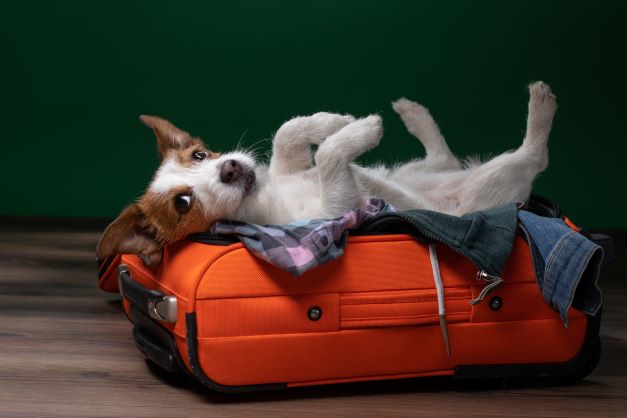The UK has been a nation of animal-lovers for some time now, and the pandemic has driven many of us to provide a home for dogs, cats, and other pets. According to the Pet Food Manufacturer’s Association, more than three million households have taken in a pet since the start of the pandemic, bringing the total up to seventeen million. It’s young people predominantly driving this trend, with more than half of new owners being aged between 18-34.
Pet ownership is not without difficulty, however, and among the biggest challenges involve taking an animal abroad. If you’re planning on travelling overseas with your pet, then there are a number of hoops which you might need to jump through. Let’s take a look at some of them.
Travelling to the EU from the UK
Animals being brought into Europe need to come with a health certificate that’s been obtained more than ten days before you depart. They’ll also need to be microchipped, and vaccinated against rabies. The jab will need to have been administered twenty-one days before you go.
In practice, you might find yourself delayed at the vet – especially if you’re travelling during a period of demand. If you don’t want a delay to interfere with your travel plans, then you might consider getting the vaccination well in advance of the deadline.
Tapeworm treatment
Some countries will insist that your pet be given treatment against tapeworm before they’ll allow you to enter. These include Ireland, Finland, Malta and Norway. Northern Ireland also requires this, so you don’t need to be travelling to a foreign country to be denied entry.
Travel to a non-EU country
Non-EU countries will always demand that you obtain an export health certificate (or EHC). If you’re a UK resident not based in Northern Ireland, then you’ll also need an export application form (or EXA). To obtain the former, you’ll need to nominate your vet. They will then be able to validate the certificate for you, allowing you to prove that your pet is healthy.
Flying with Pets
If you intend to take your pet on an aircraft, then special considerations must be made. It’s worth noting that not all airlines have the same rules when it comes to animals, so it pays to do your research ahead of time, and to pick out an operator that’s appropriate to your needs.
In some cases, you may be allowed to take your pet into the cabin itself, especially if you are flying by private jet, where your pet is treated as a passenger. If your pet is prone to separation anxiety, having your pet in the cabin with you, can often be the best solution. Many commercial airlines, however, will forbid this unless the animal is a guide or support animal.
If your pet is very big, then they might incur additional costs even if they’re flying in the hold. Make sure that you bear this in mind when considering your options. You might also consider the temperament of your pet – taking an unruly dog through an airport can be a very, very stressful experience.
Following the advice above will enable you to travel with your pet in a smooth and controlled manner. Making the experience a pleasant one for all involved.

